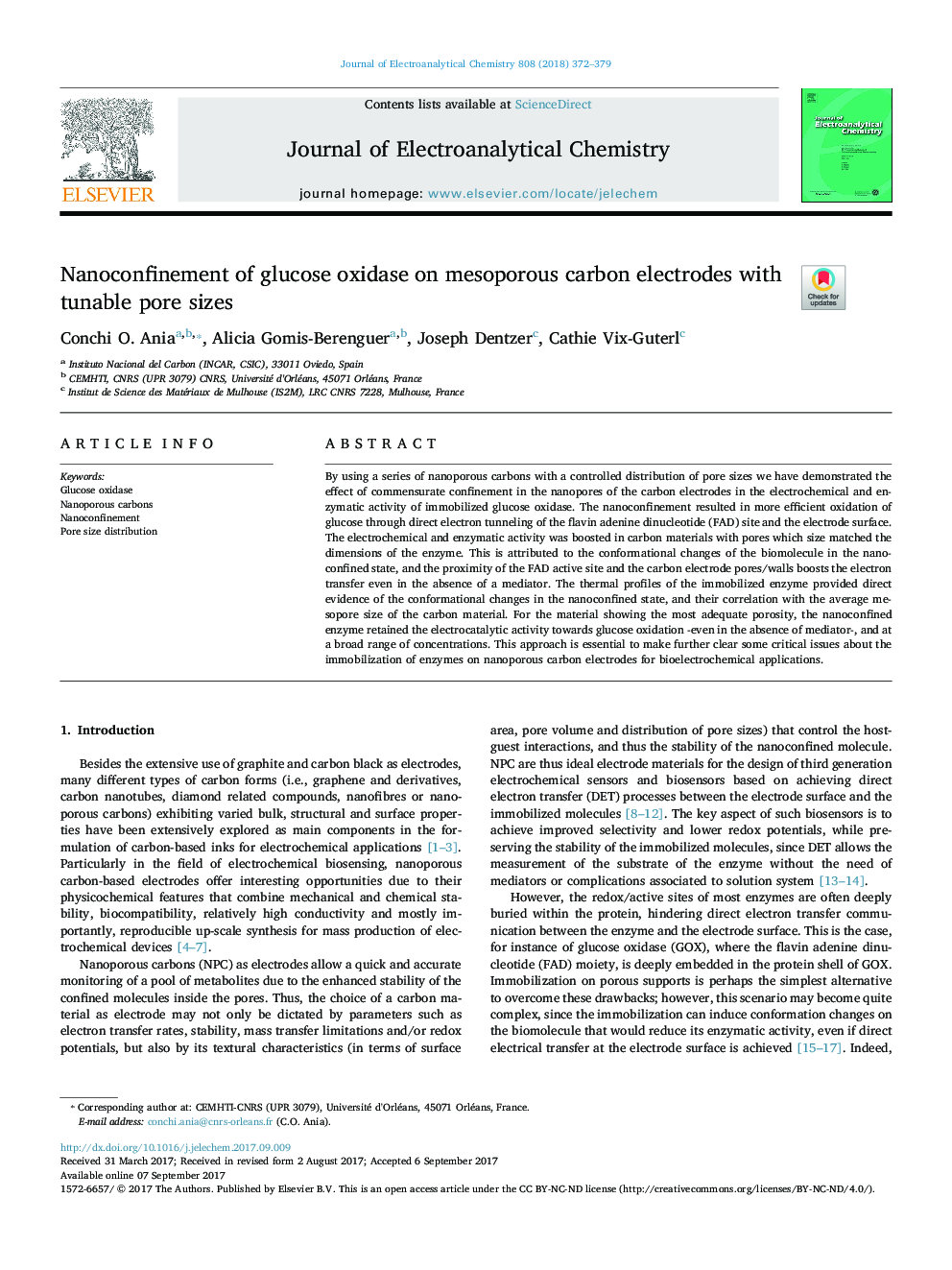| Article ID | Journal | Published Year | Pages | File Type |
|---|---|---|---|---|
| 6662305 | Journal of Electroanalytical Chemistry | 2018 | 8 Pages |
Abstract
By using a series of nanoporous carbons with a controlled distribution of pore sizes we have demonstrated the effect of commensurate confinement in the nanopores of the carbon electrodes in the electrochemical and enzymatic activity of immobilized glucose oxidase. The nanoconfinement resulted in more efficient oxidation of glucose through direct electron tunneling of the flavin adenine dinucleotide (FAD) site and the electrode surface. The electrochemical and enzymatic activity was boosted in carbon materials with pores which size matched the dimensions of the enzyme. This is attributed to the conformational changes of the biomolecule in the nanoconfined state, and the proximity of the FAD active site and the carbon electrode pores/walls boosts the electron transfer even in the absence of a mediator. The thermal profiles of the immobilized enzyme provided direct evidence of the conformational changes in the nanoconfined state, and their correlation with the average mesopore size of the carbon material. For the material showing the most adequate porosity, the nanoconfined enzyme retained the electrocatalytic activity towards glucose oxidation -even in the absence of mediator-, and at a broad range of concentrations. This approach is essential to make further clear some critical issues about the immobilization of enzymes on nanoporous carbon electrodes for bioelectrochemical applications.
Related Topics
Physical Sciences and Engineering
Chemical Engineering
Chemical Engineering (General)
Authors
Conchi O. Ania, Alicia Gomis-Berenguer, Joseph Dentzer, Cathie Vix-Guterl,
